Travels with Dick and Karen
Florida Part 2
The Keys and Miami
(red line on map) |
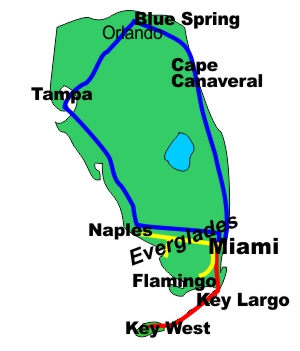 |
| The Overseas Highway is the only path to the Keys. The first section's walls are painted an unexpected bright aqua. (How Florida!) |
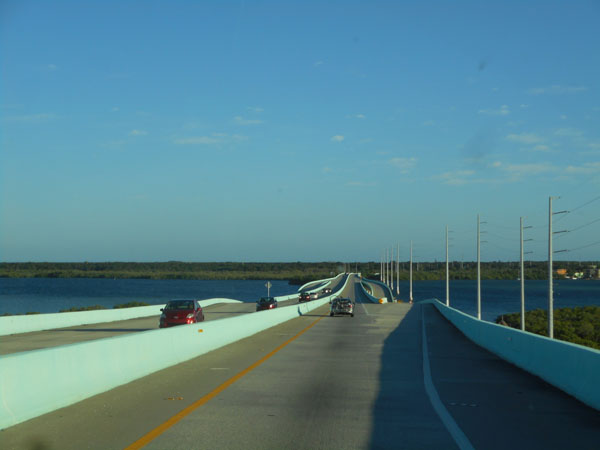 |
| Our first stop was Key Largo where we were joined by our friends Mary and Jeremy Keller, ceramic artists from Ohio. For the next 18 days, they'd be doing craft fairs around Florida on the weekends, then catching up with us to play during the weeks. |
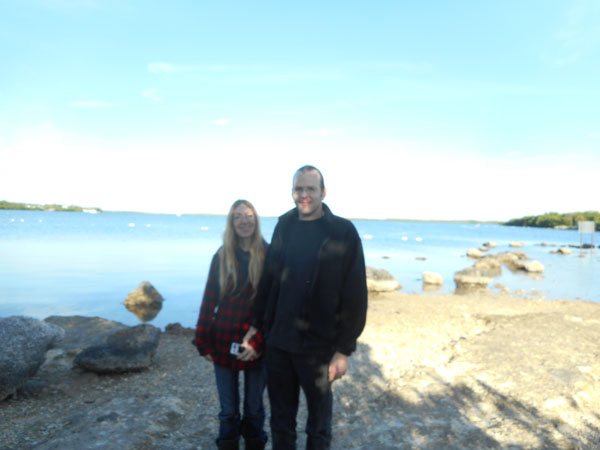 |
Key Largo Kampground was nicely spaced, clean and friendly. It also had chickens nesting in the grill. |
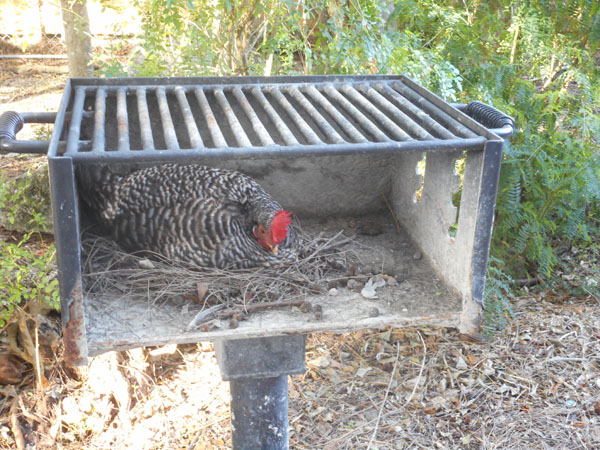 |
| The whole area is uplifted coral and trapped sediment. We kept looking at what we were walking on and wondering how long ago the coral organisms had built it out of seawater. |
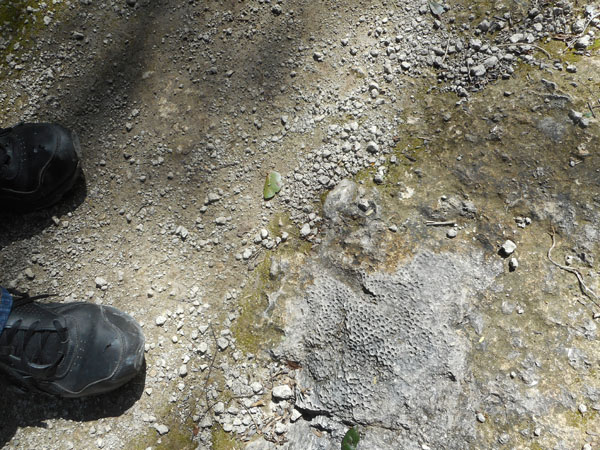 |
| Red mangroves grow out in the water on stilt roots |
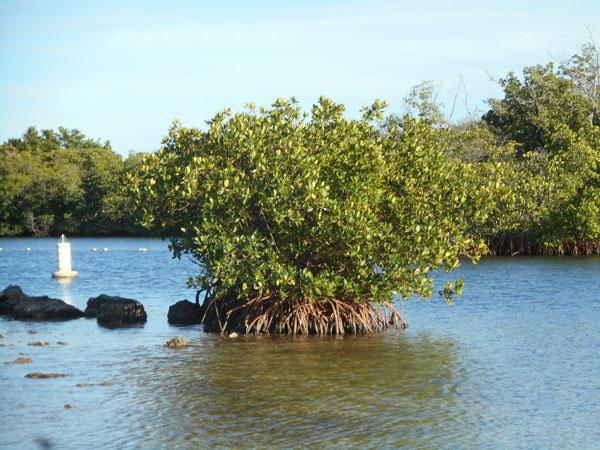 |
| Black mangroves with their air roots take over once the reds have built up the sediment enough. Before you know it you have an island or "key". |
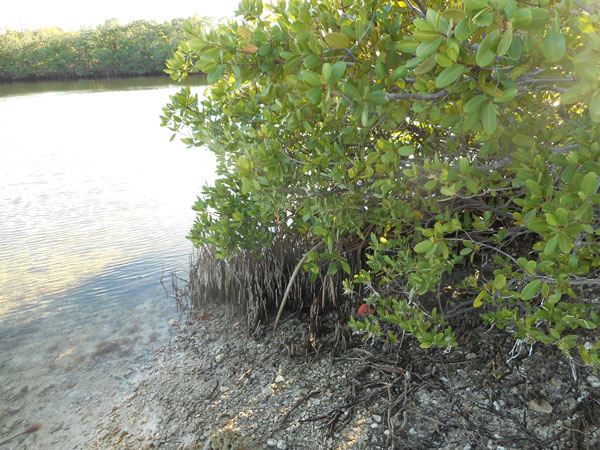 |
| Walking in the nearby Dagney Johnson Key Largo Botanical State Park we saw lots of spiders. This is the Black and Yellow Garden Spider. |
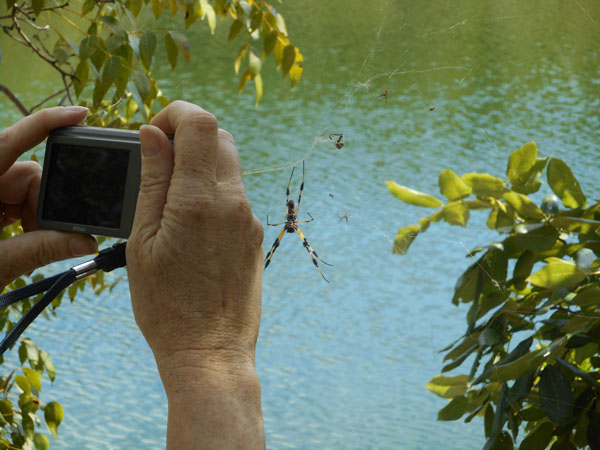 |
| This is the much smaller (3/8" diameter) Sunburst spider (boring proper name: "Crab-like Spiny Orb Weaver"). |
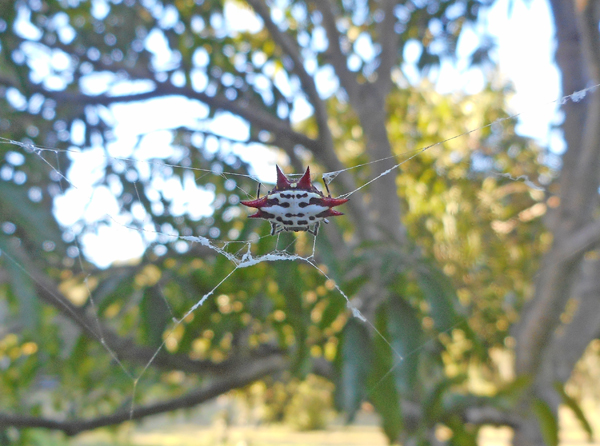 |
At the John Pennekamp Coral Reef State Park we met lots of White Ibis (Ibises? Ibii?) (admiring Quilt, naturally) |
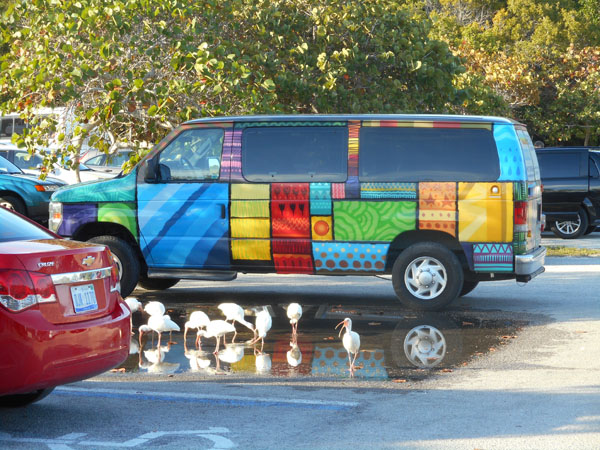 |
| Both mature and juvenile (with brown) doing their usual probing for lunch with their bills |
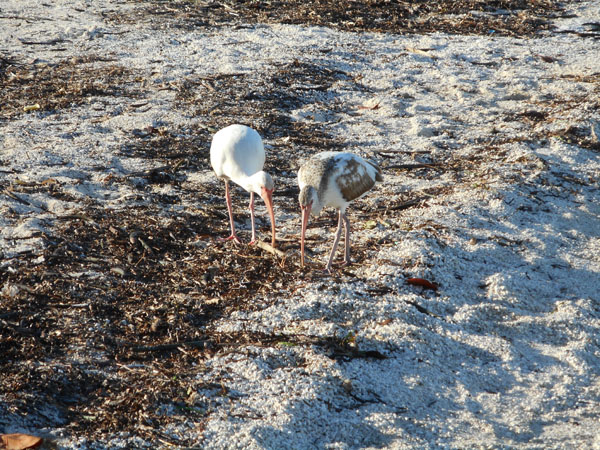 |
| Some search for lunch by more modern methods |
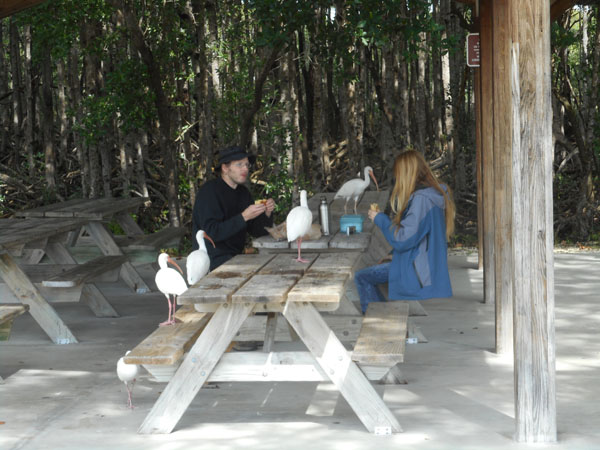 |
| From the Park we took a glass-bottomed boat tour out to the coral reef |
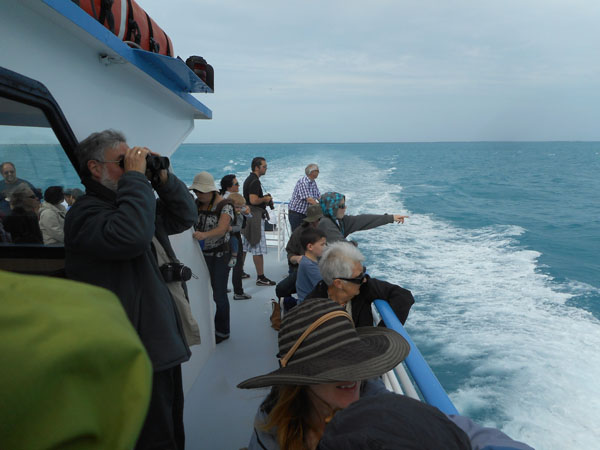 |
| |
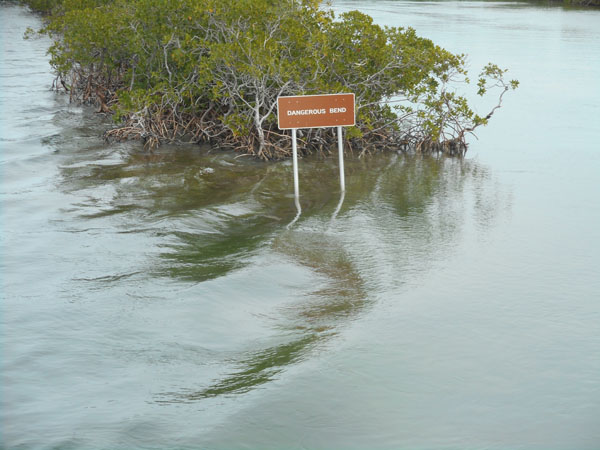 |
| The boat was a catamaran with windows in both hulls. Dense seating with the guide hopping between hulls to call out and name interesting fish, corals and sunken objects. |
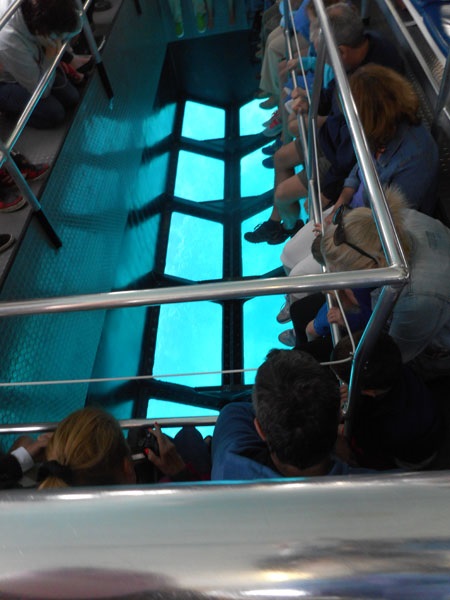 |
Here there be coral...
There was quite a breeze outside, so even the catamaran was pitching quite a bit and having problems maintaining station. |
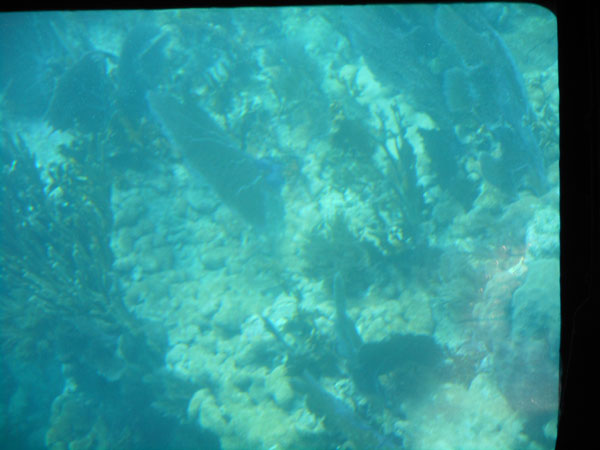 |
| The mechanics behind supporting modern life on the Keys is interesting. Getting electricity and fresh water out to the keys is a problem. Electricity is strung on poles set in the shallow water like those shown (the birds love the platforms at the base). The water is in a pipe under the highway. Since the Keys are surrounded by salt water they get their fresh water from the mainland. Water conservation signs are everywhere. Hurricanes cause major problems. |
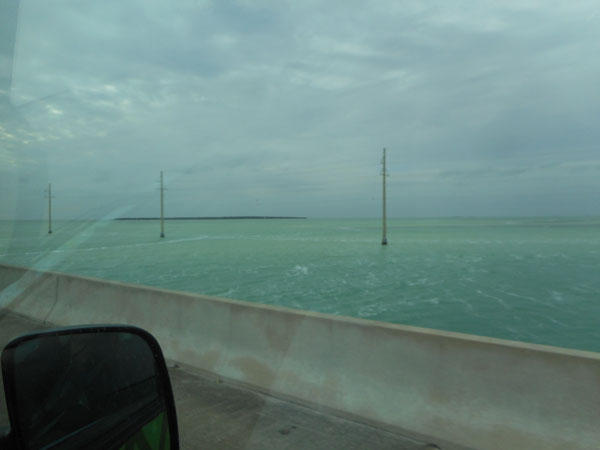 |
| Dick's view of the trip as we continue down the Overseas Highway to relocate to Fiesta Key Campground about 20 miles further south. |
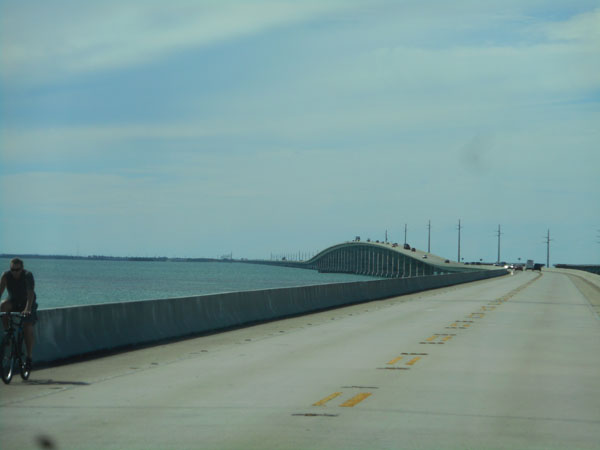 |
| There is an old one lane highway running alongside the current wider one in many sections. Sometimes it is used by fishermen and sometimes it is just a deteriorating bird hangout with caution signs telling boats to watch out for falling concrete. |
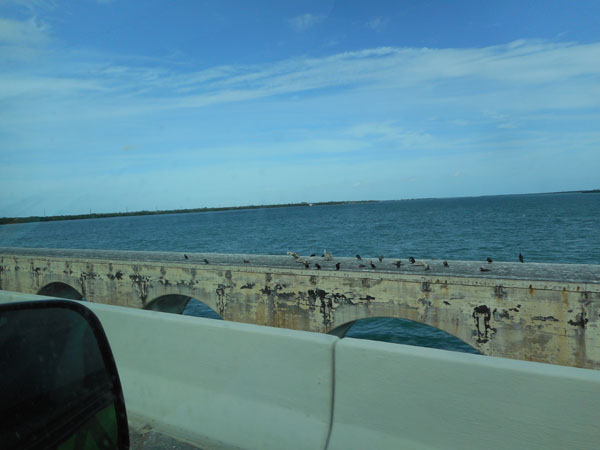 |
| Whenever a group of pelicans soared by we would stop to watch. They are so powerful and majestic |
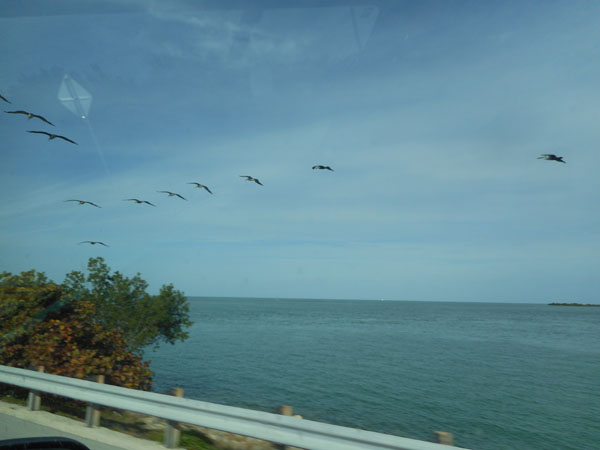 |
| Walking around the camp in the evening Mary spied a pelican hanging out at the fish cleaning station. |
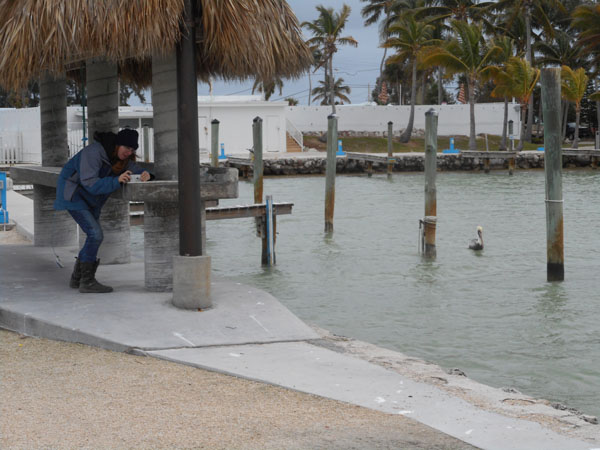 |
| I think it knows how good looking it is. |
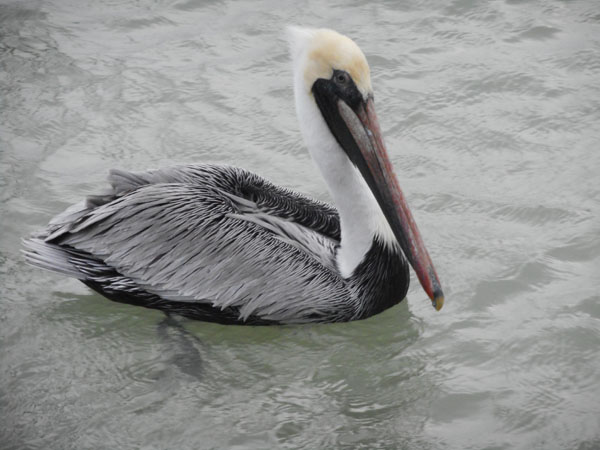 |
| The next day in Key West we visited the Key West Garden Club's installation at the West Martello Tower, an old Civil War fort. The volunteers have really got an impressive and peaceful display. |
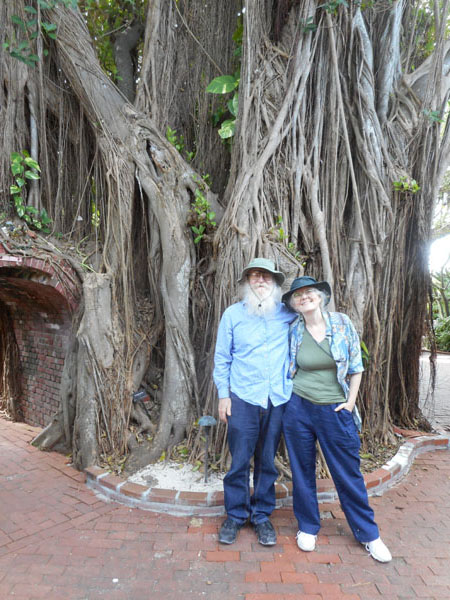 |
| Lizards and birds abound. |
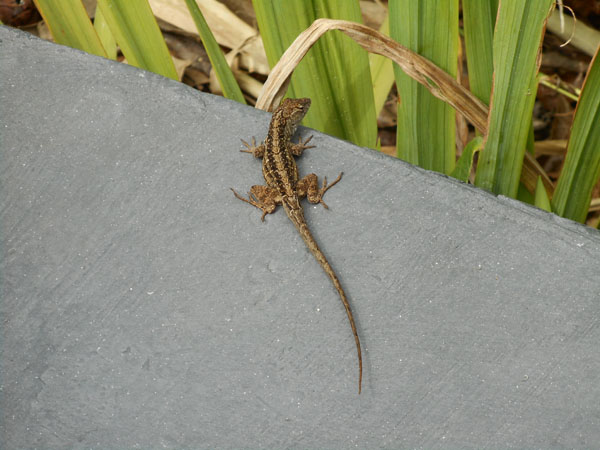 |
At lunch we walked around downtown Key West a bit
|
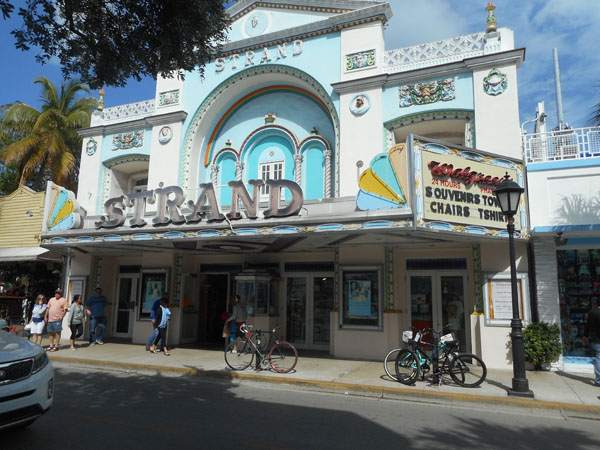 |
| these are coolers |
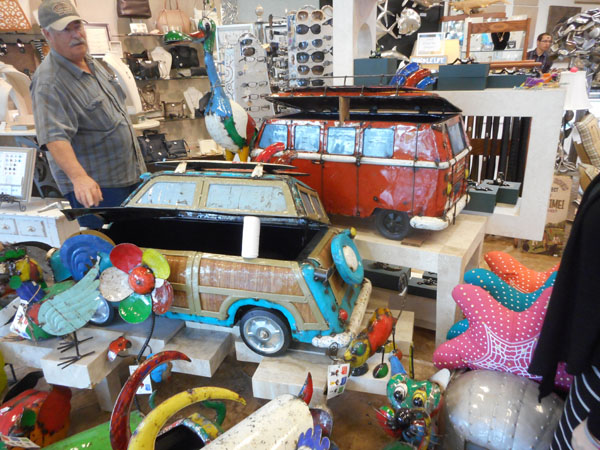 |
| (child for scale) |
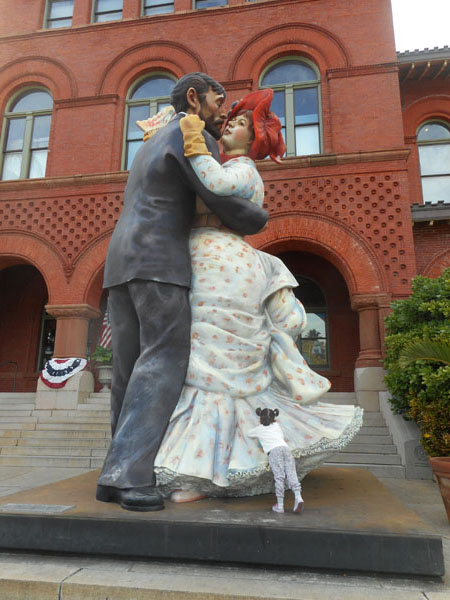 |
| At the tip of Key West is another Civil War fort (with excellent beach). We walked to it to visit the adjacent Florida Keys Eco-Discovery Center. |
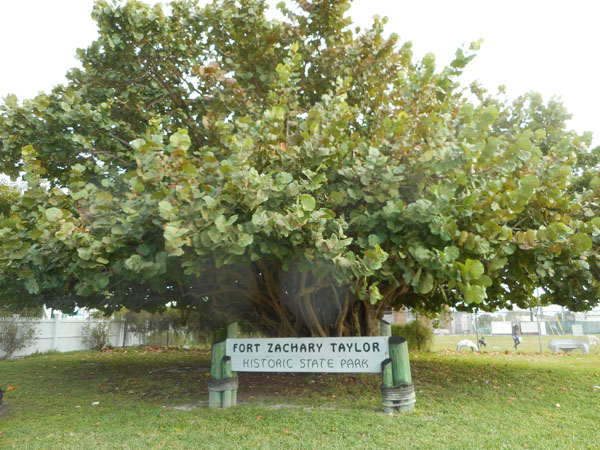 |
| On the way home stopped at the Blue Hole on Big Pine Key in the National Key Deer Refuge. |
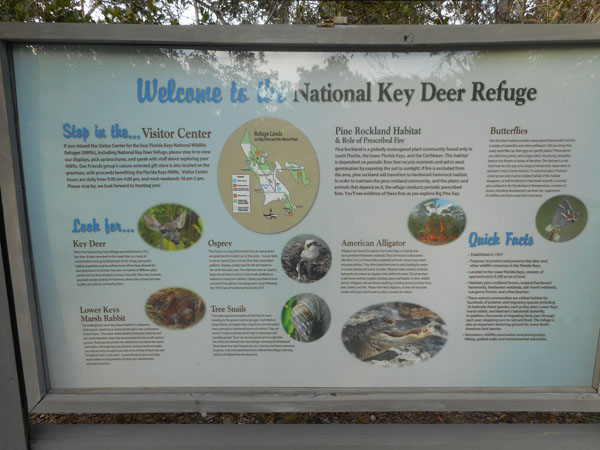 |
| And, indeed, we met the tiny Key Deer, not too preturbed by our presence. |
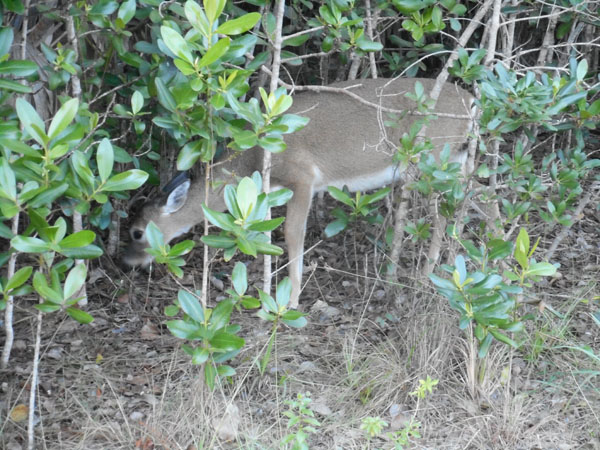 |
| Blue Hole is a water-filled quarry: the largest body of fresh water on the Keys |
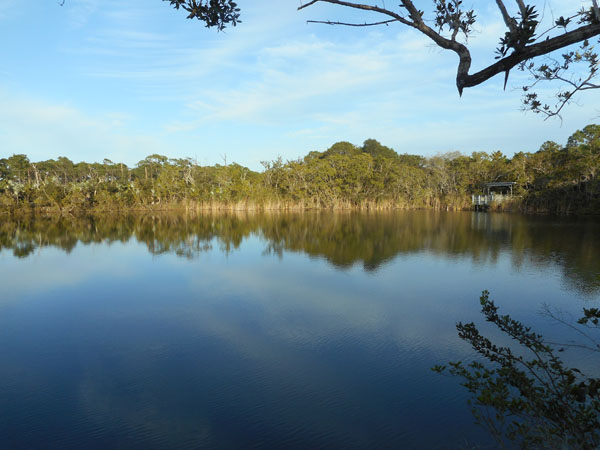 |
and home to turtles, fish |
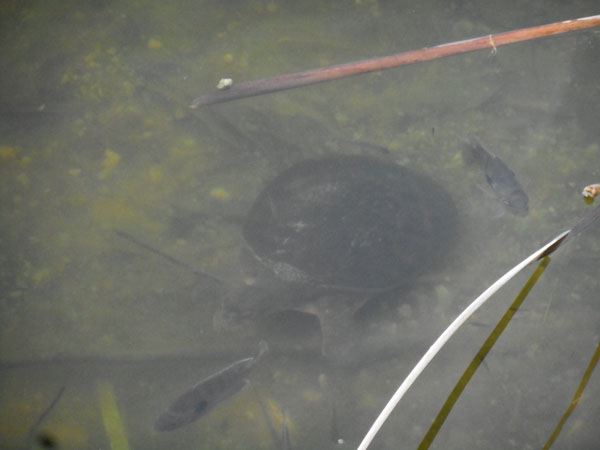 |
| and alligators |
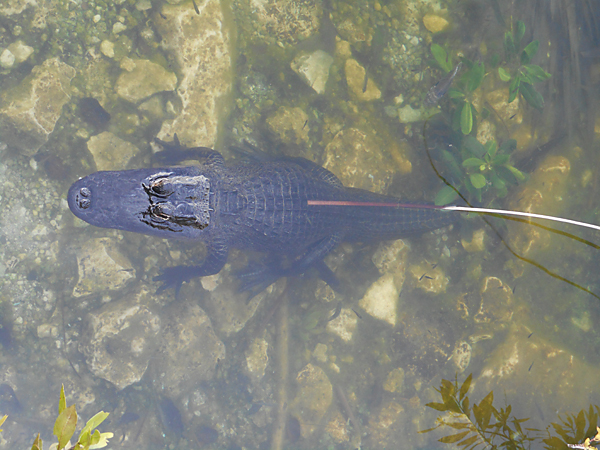 |
| Dick spotted a Startrek shuttlecraft (complex docking maneuvers ensued). |
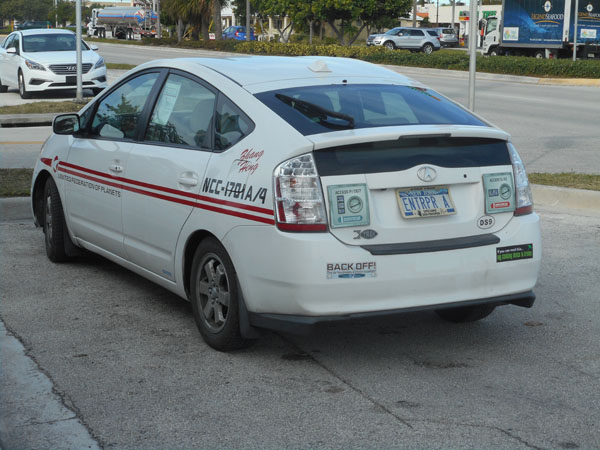 |
| |
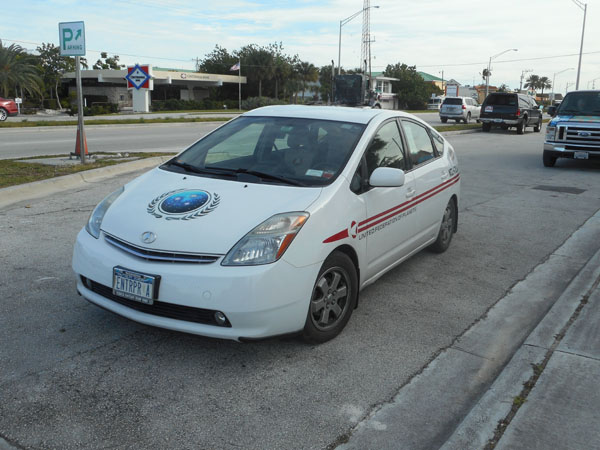 |
| The next morning we all admired The Crane Point Nature Preserve's lovely doors to their museum |
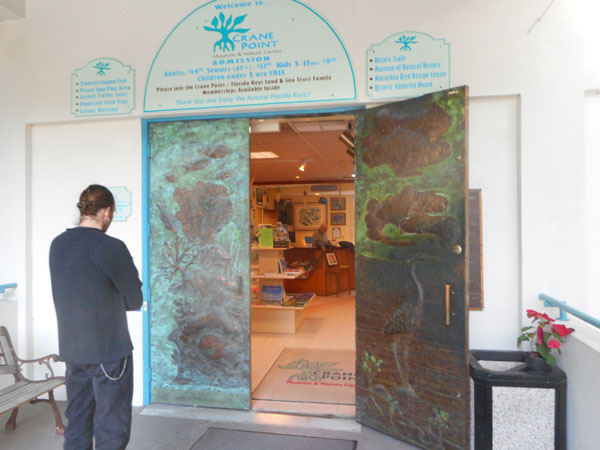 |
| and a wonderful boardwalk with |
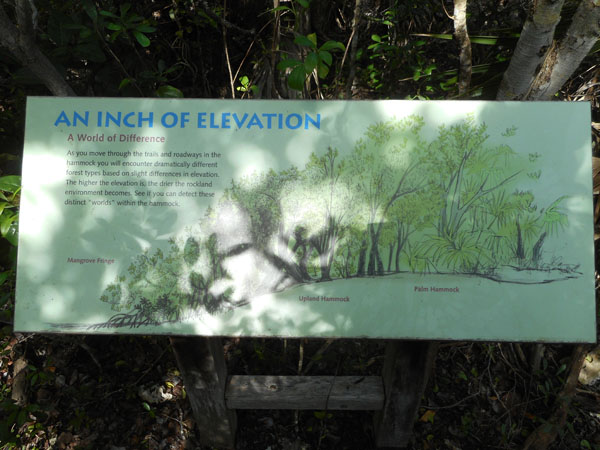 |
| cardinals avoiding the colder weather up north |
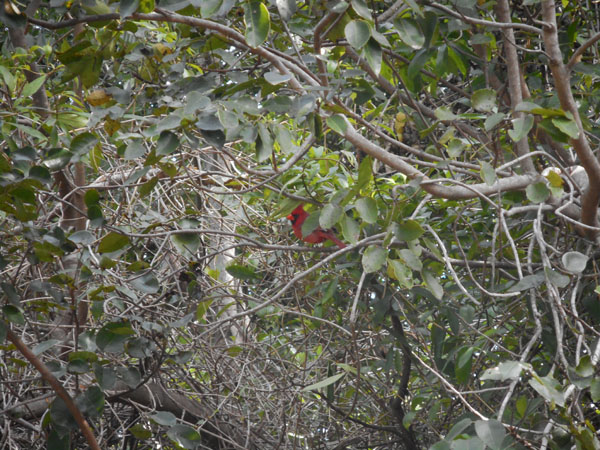 |
| tannin-colored water |
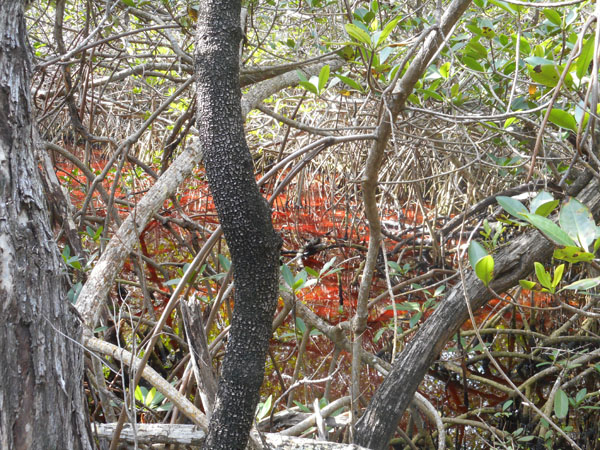 |
| big leaves |
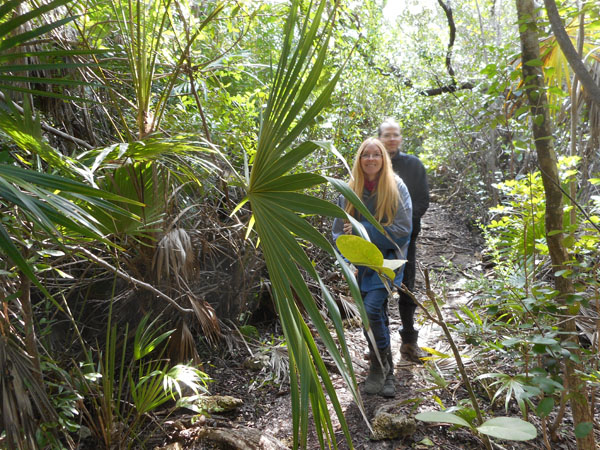 |
| a bird sancturary -- once they heal they are released to the wild again. Hopefully having learned not to go after fishing lures. |
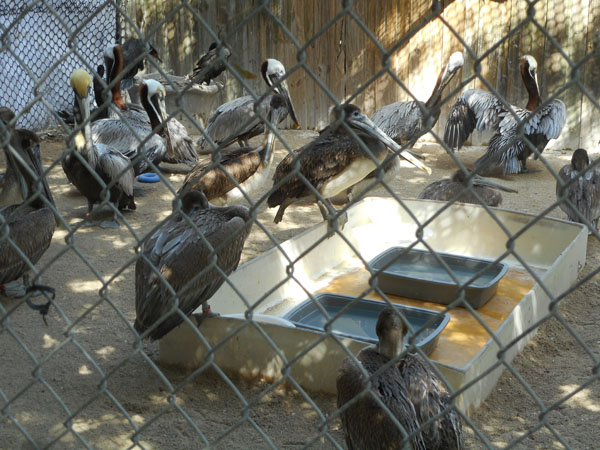 |
| And more strangler figs. |
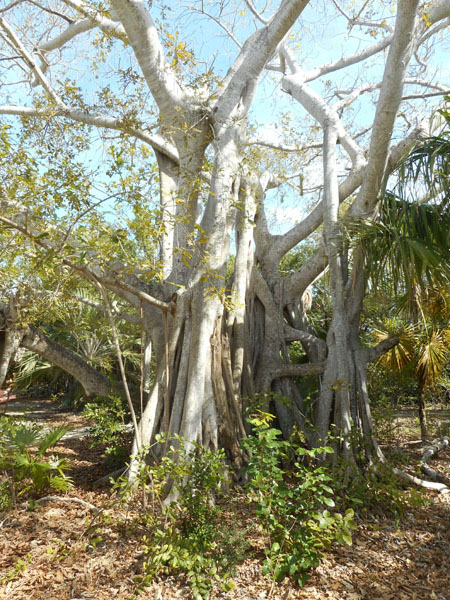 |
| Next stop was one of the abandoned bridge sections turned into a fishing pier. We went out to see what was passing by underneath, but the water was stirred up enough that we couldn't see much. |
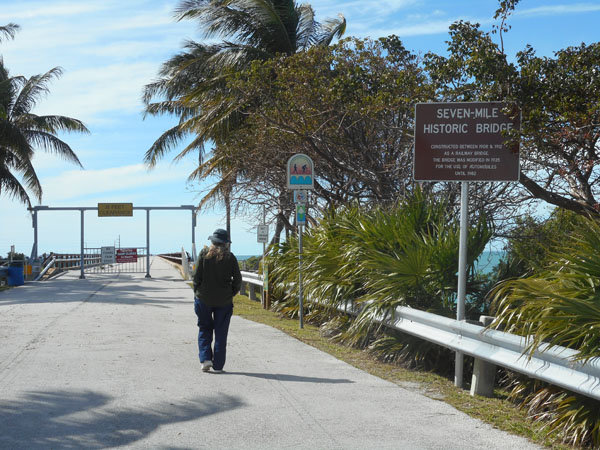 |
| Dick pointed out the use of recycled train rails as guard rails |
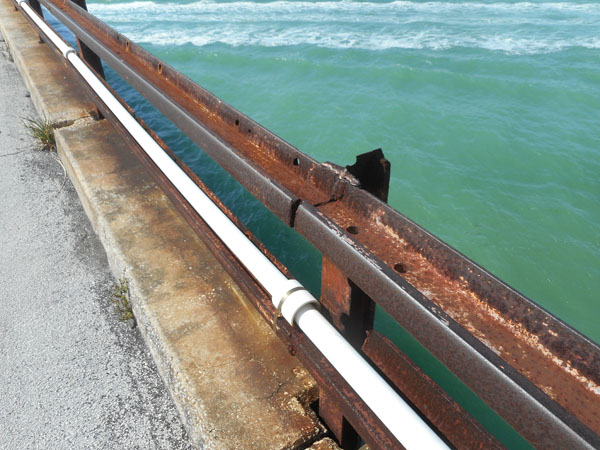 |
| The next day we went to Bahia Honda State Park where an artist had made a custom sand castle. |
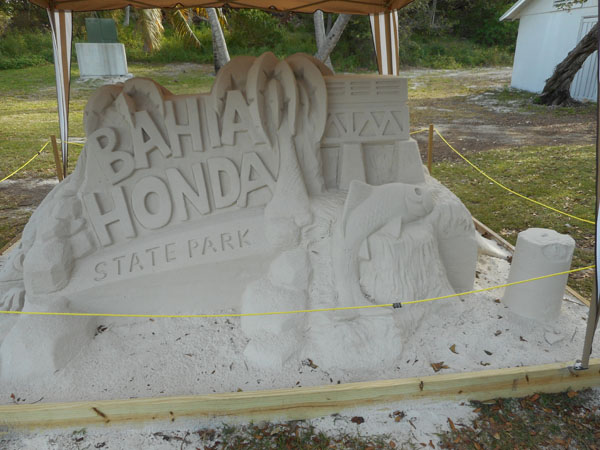 |
| our fellow beachcombers |
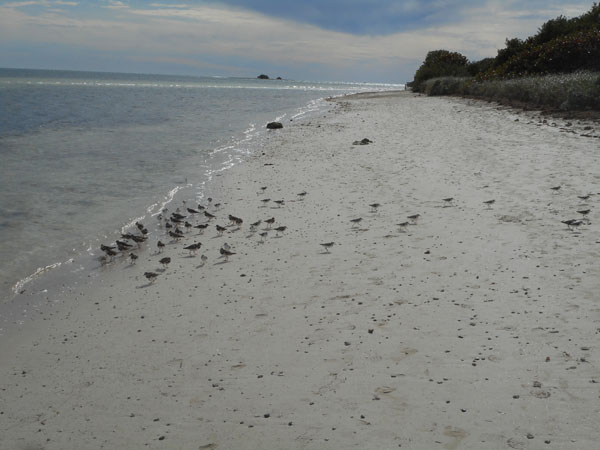 |
| washed up jellyfish |
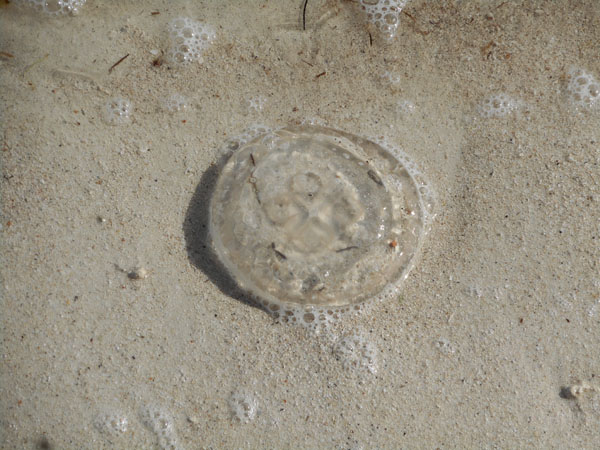 |
| While 3 of us were looking down |
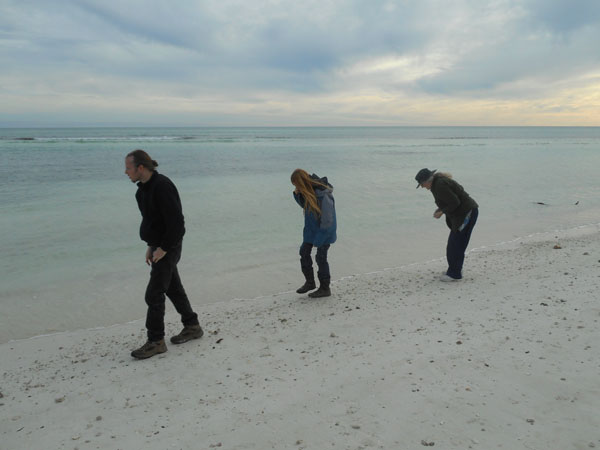 |
| Dick was watching a pair of pelicans |
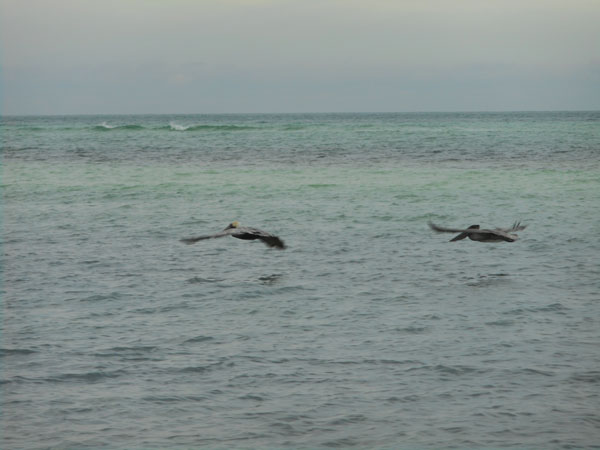 |
The mother seemed to be teaching her offspring how to fish: fly, turn and dive. An eleven second video of another pelican's dive with a tern trying to steal the catch is here. |
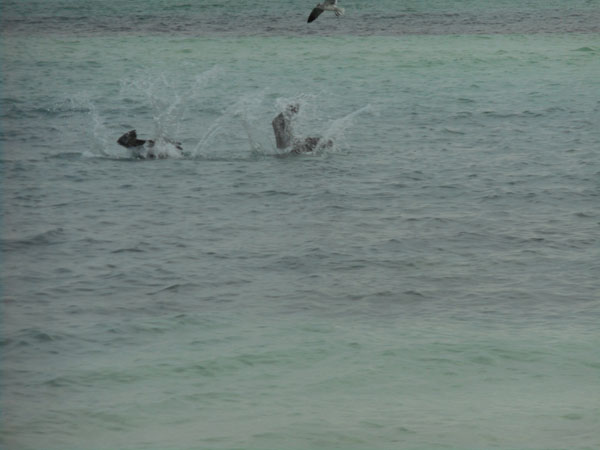 |
| A lovely end of day shot at the Fiesta Key campground |
 |
| In the morning we relocated to Lisette's lovely AirBnB Cottage in the Coral Gables area of Miami. This placed the Kellers near the Coconut Grove craft show they were doing on the weekend. |
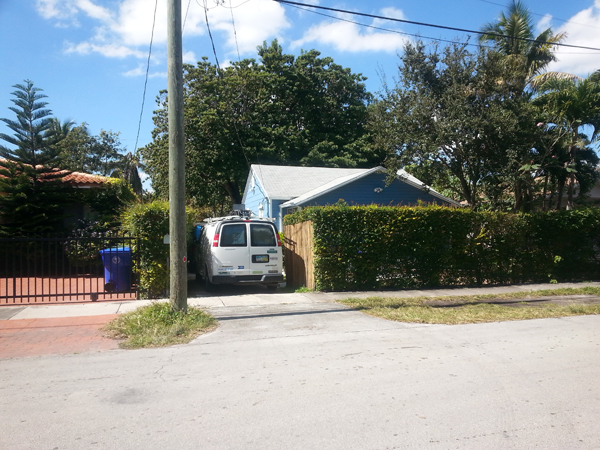 |
| That afternoon we all squeezed in a visit to the 83-acre Fairchild Tropical Botanic Gardens, five miles south of Coconut Grove. |
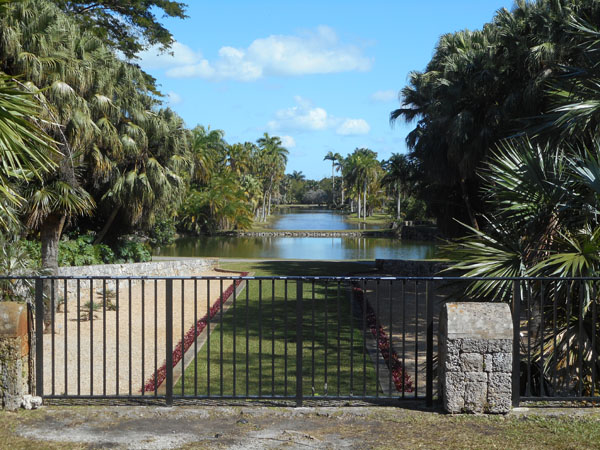 |
| |
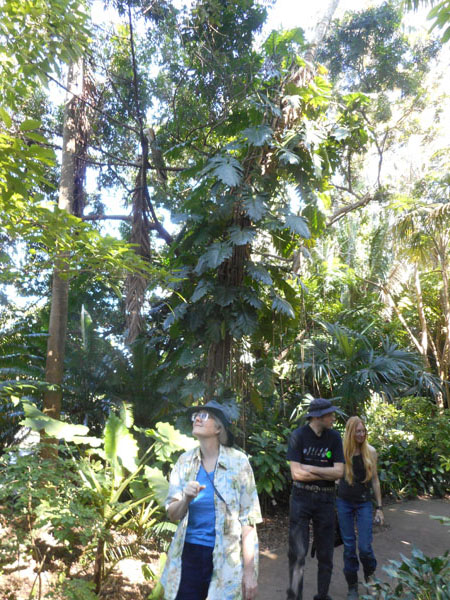 |
| cannonball trees |
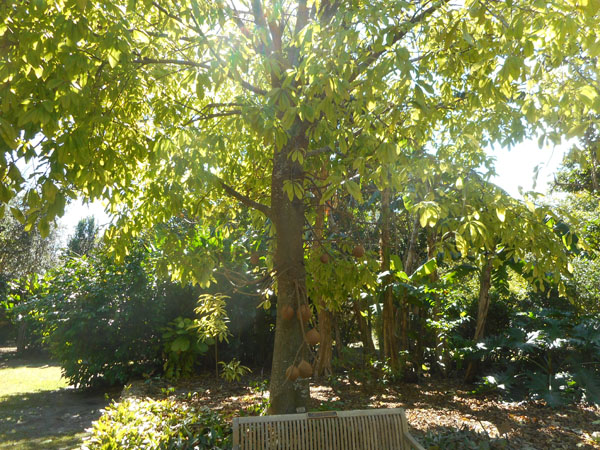 |
| cocoa |
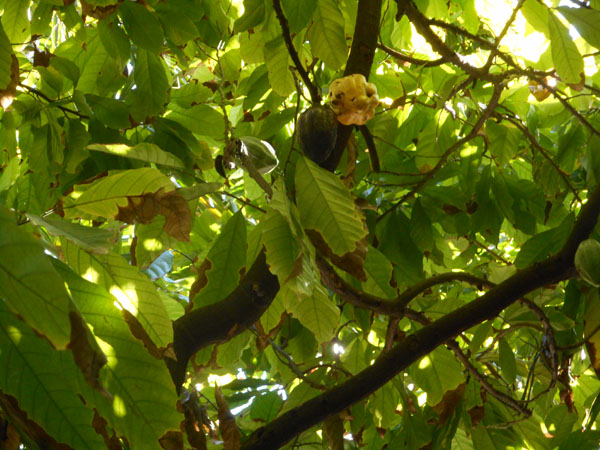 |
| sausage trees |
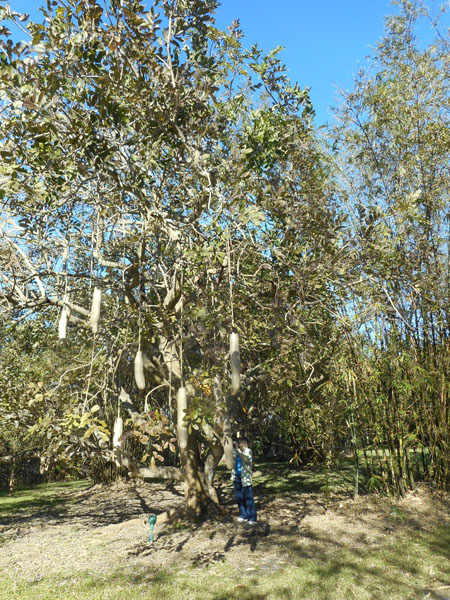 |
| the requisite Chihuly |
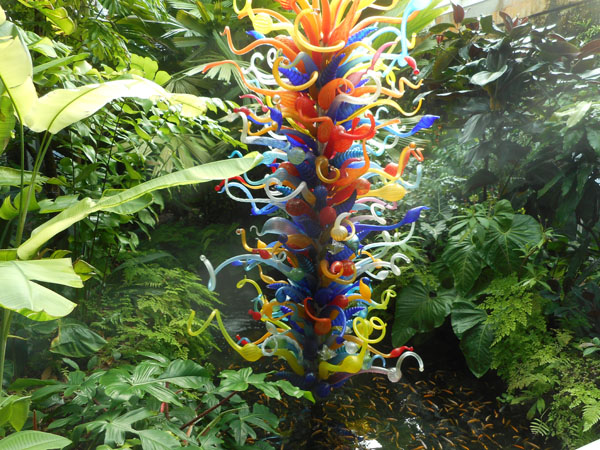 |
| a butterfly house: these are non-native |
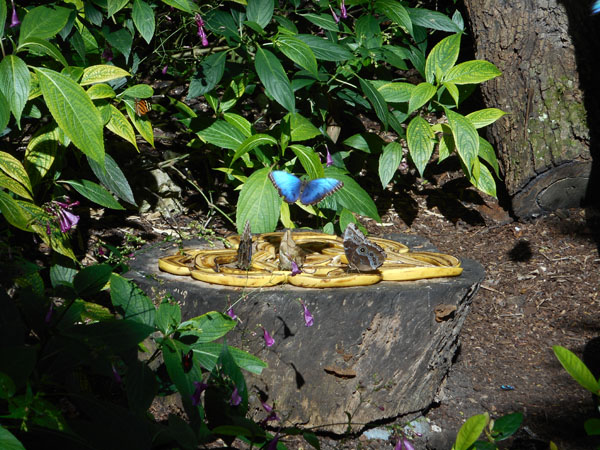 |
| |
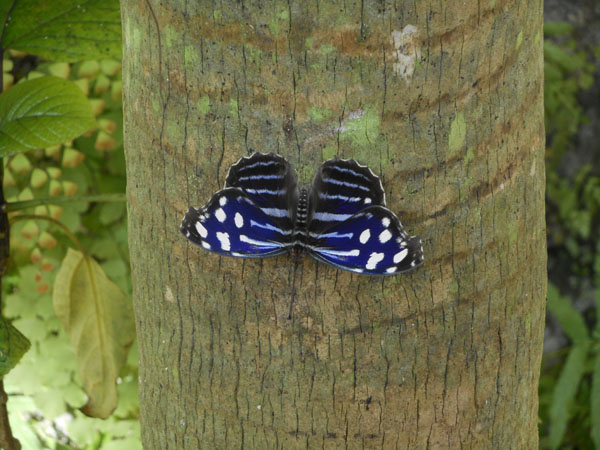 |
| lots of trees |
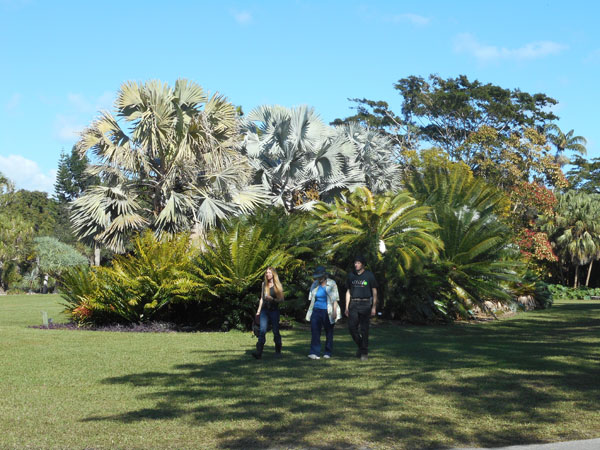 |
| |
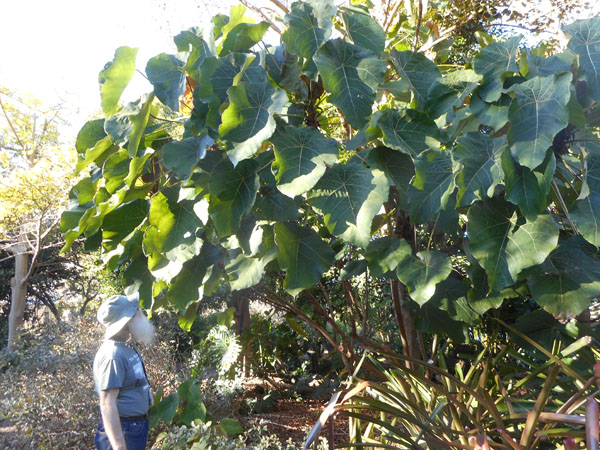 |
| many with epiphytes, |
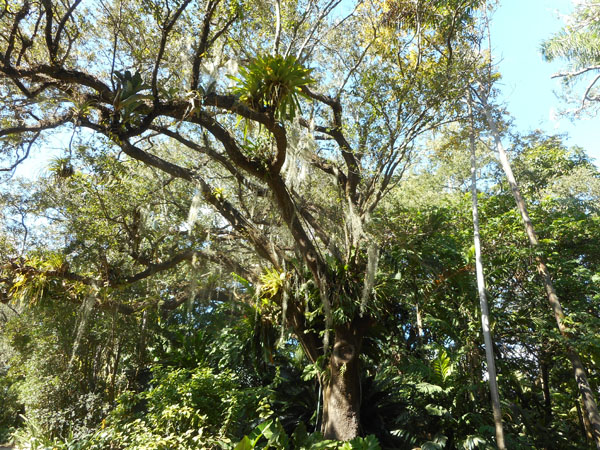 |
| including a huge orchid display scattered among the plantings |
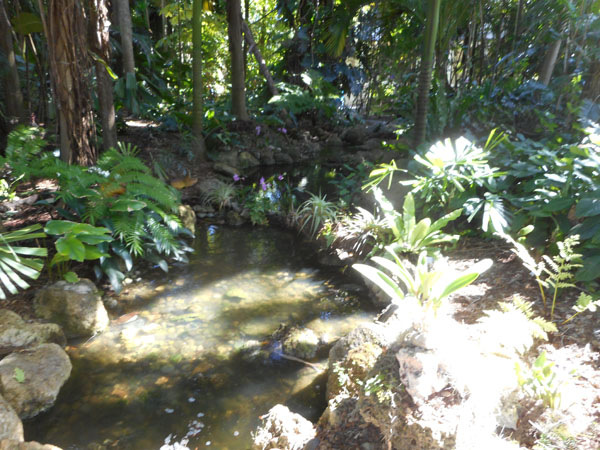 |
| spiderwebs |
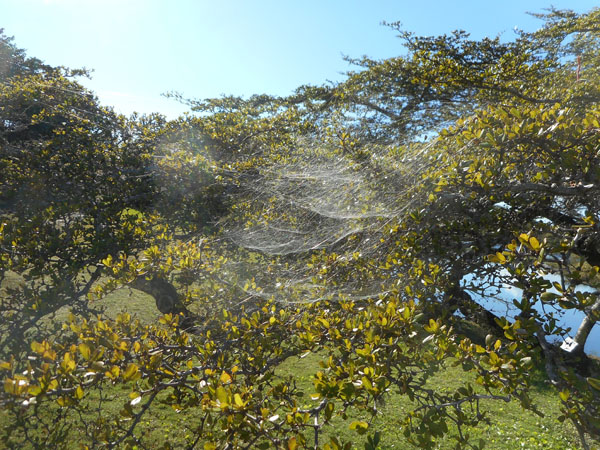 |
| spiders |
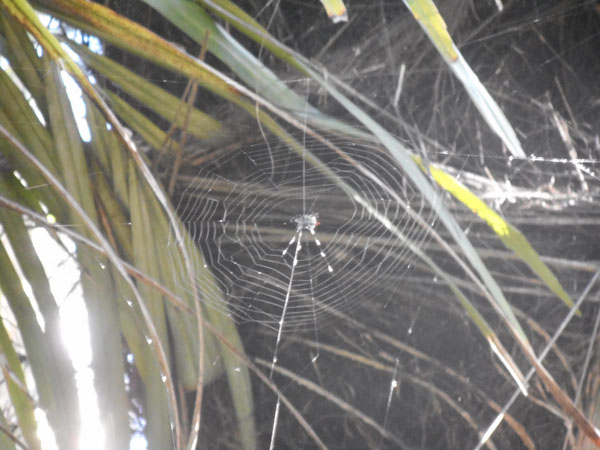 |
| (another Sunburst) |
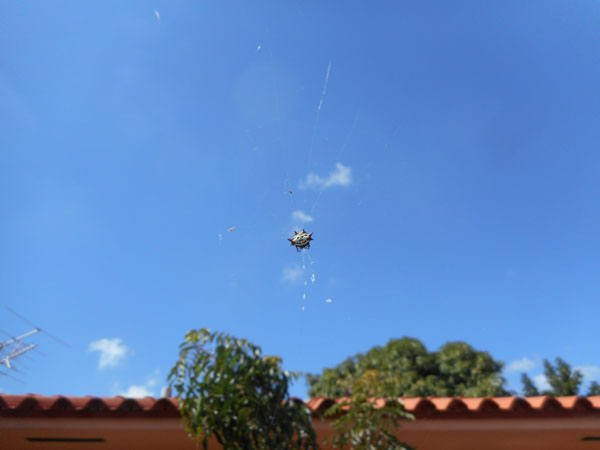 |
| ubiquitous ibis (curved beaks) |
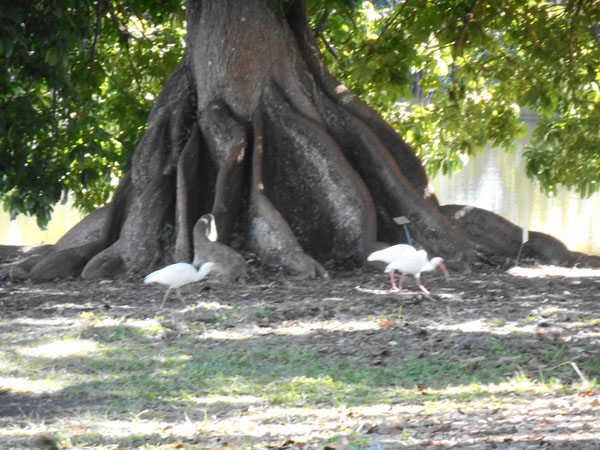 |
| and great egrets (straight beaks) |
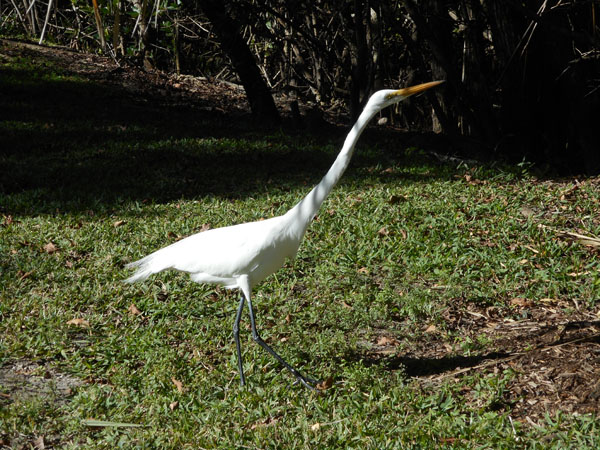 |
| great blue herons |
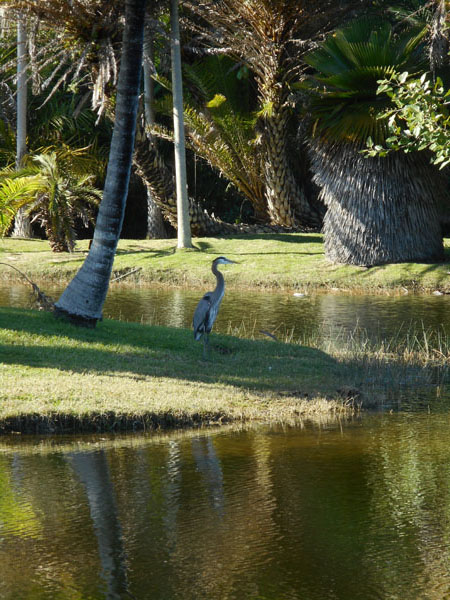 |
| and gorgeous vistas |
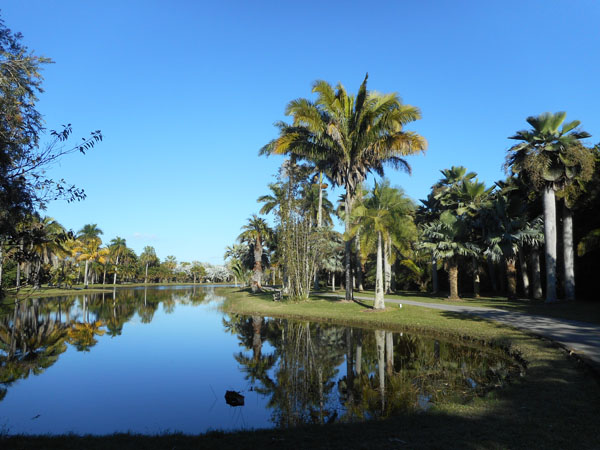 |
| |
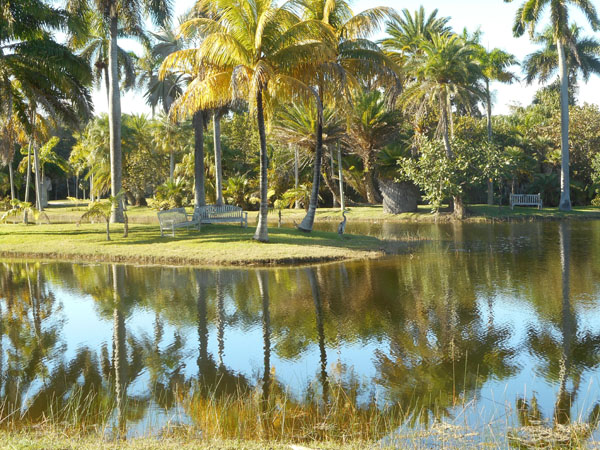 |
| Back out on the "ordinary" streets Karen was filling her camera with strangler fig shots. |
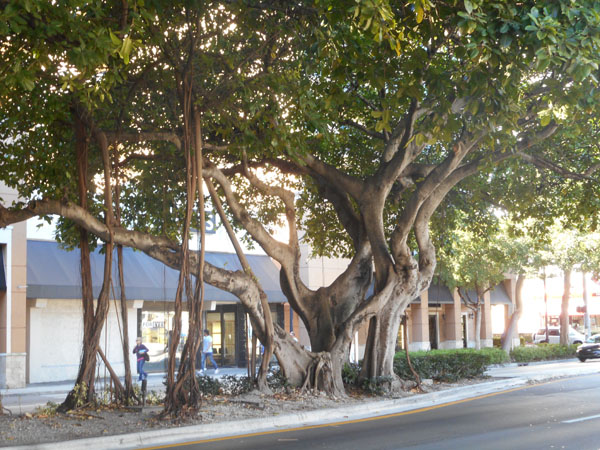 |
| Note that this is originally a palm tree, now becoming a fig tree. |
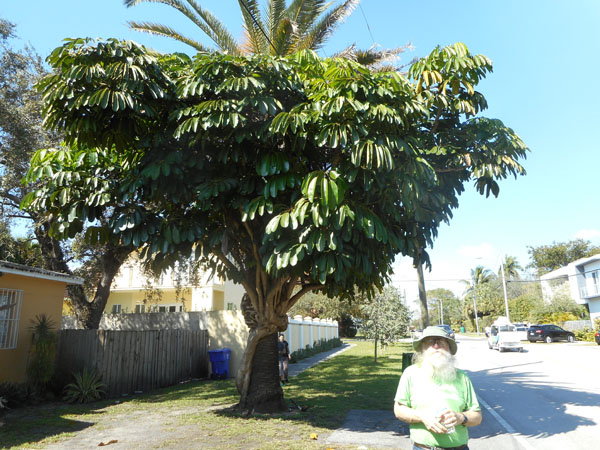 |
| The next day we walked from the AirBnB cottage down to the Coconut Grove area. Colorful mosaics along the way. |
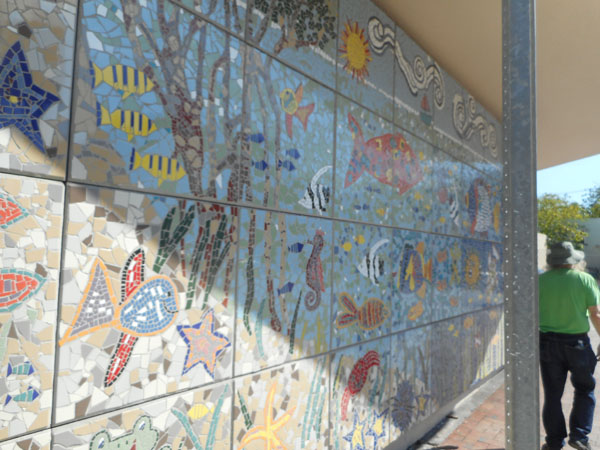 |
| Stained glass |
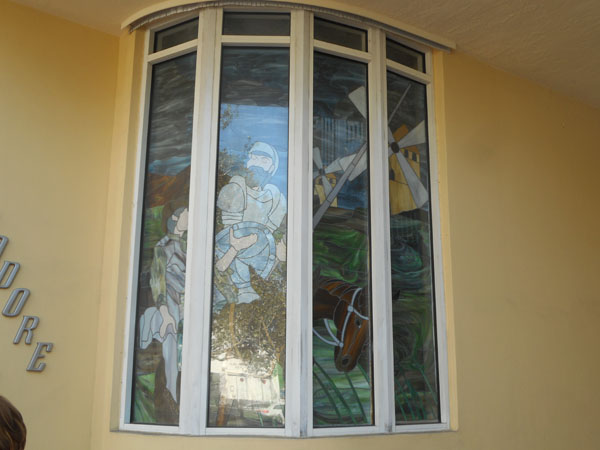 |
| farmer's market |
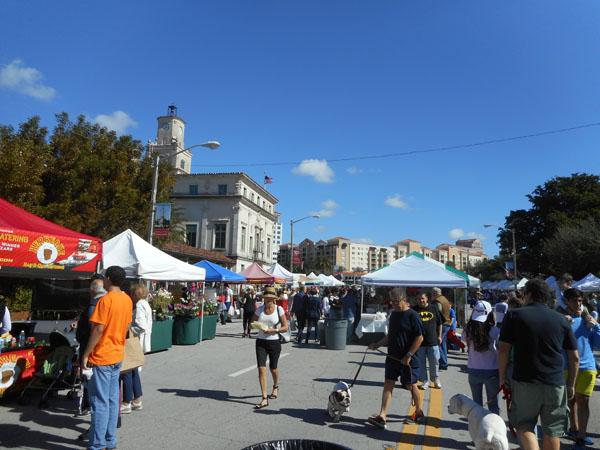 |
| and a small serene park (the Barnacle Historic State Park) |
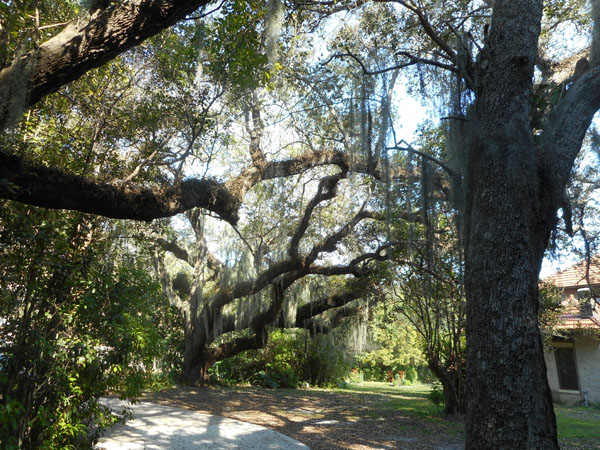 |
| down by the water Dick looked at the "railway" used to bring ships ashore for working on them |
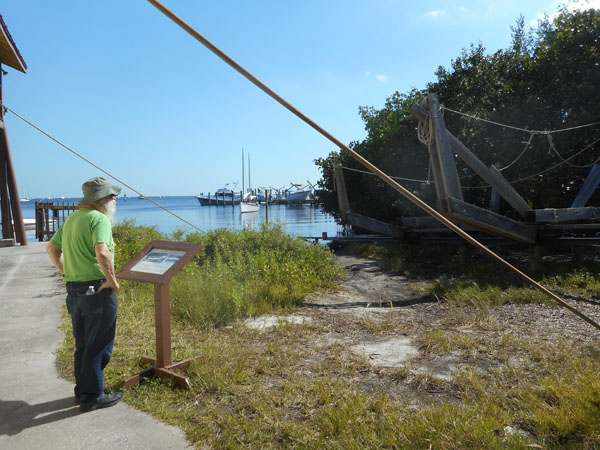 |
| A very strange bamboo with thorns. |
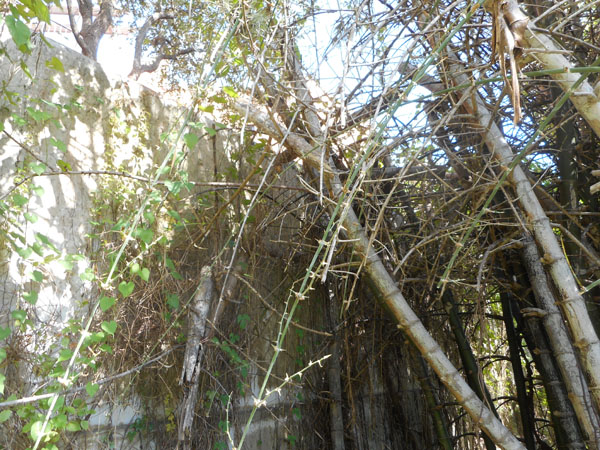 |
| The next day we visited Mary and Jeremy's booth at the show with our niece Lori (left) |
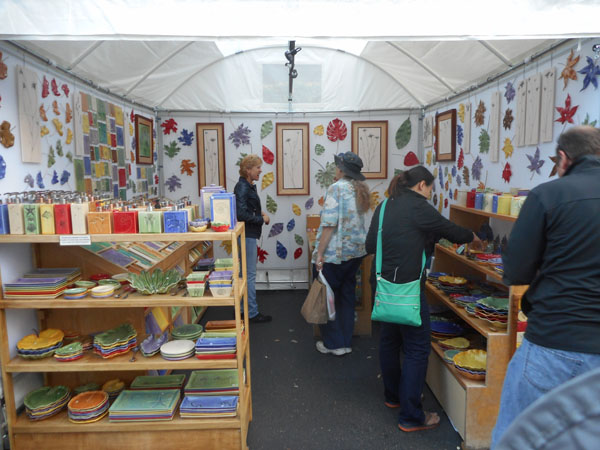 |
| Despite the rainy weather of the following day we toured the The Kampong, (call for appt.), previously owned by the plant collector who started the Fairchild Gardens and now part of the National Tropical Botanical garden system |
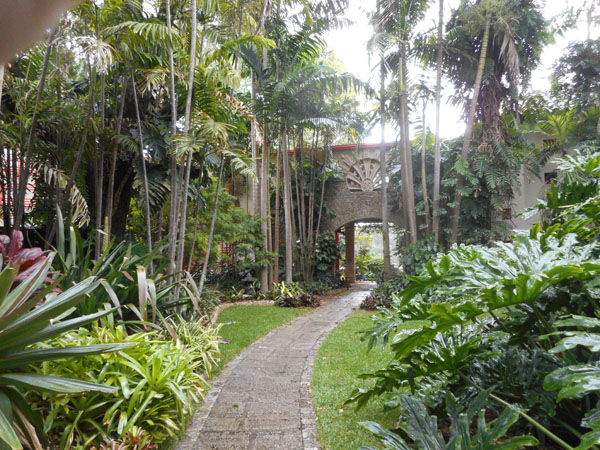 |
| The carved dragon in the entry hall was amazing. |
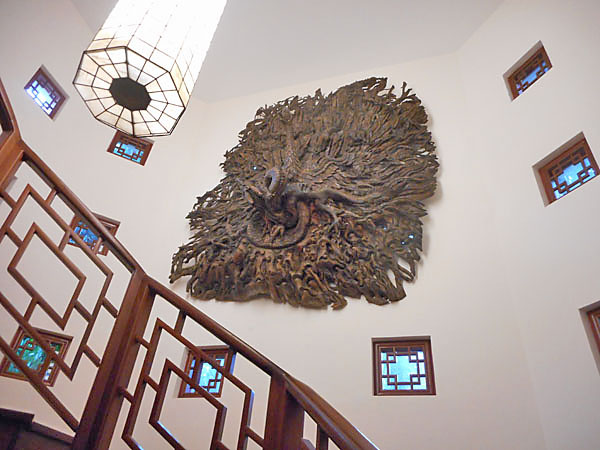 |
| as were the huge trees |
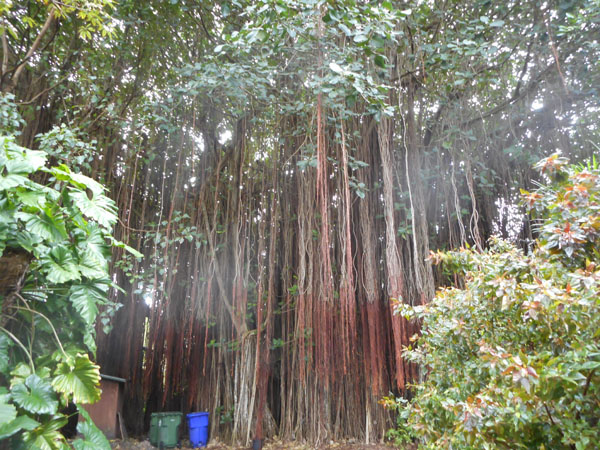 |
| |
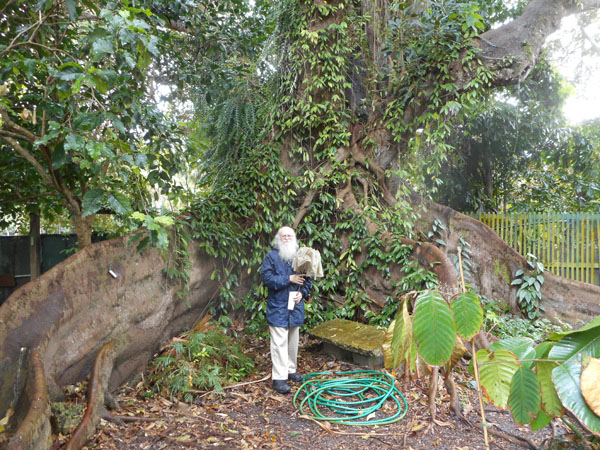 |
| and other tropicals |
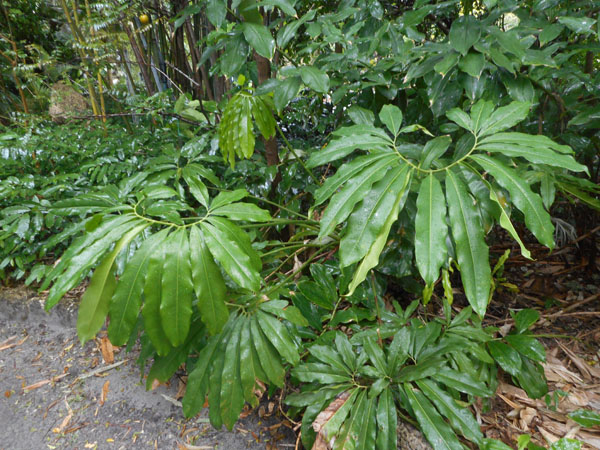 |
| lots of uncommon philodendron species |
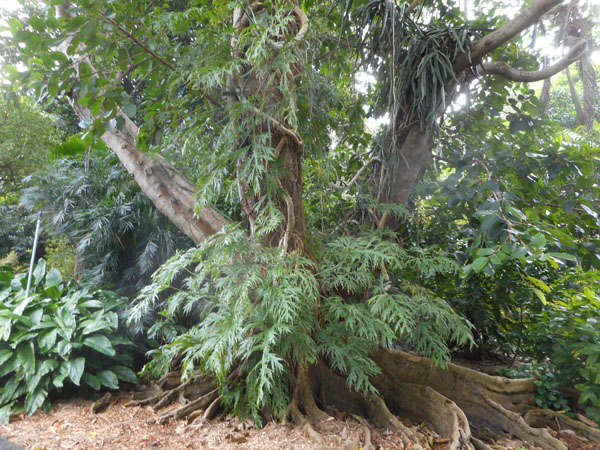 |
| lots of tropical fruit trees. |
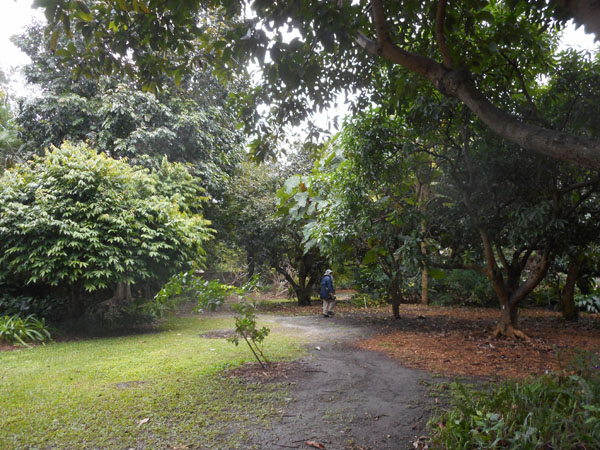 |
| Fruit on the ground, related to sappodilla |
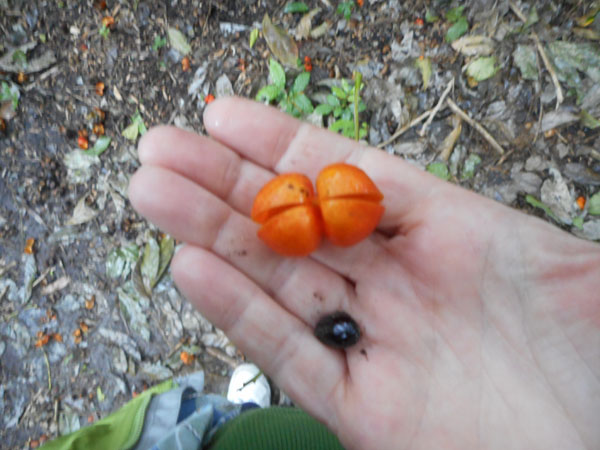 |
| A few trees were in flower |
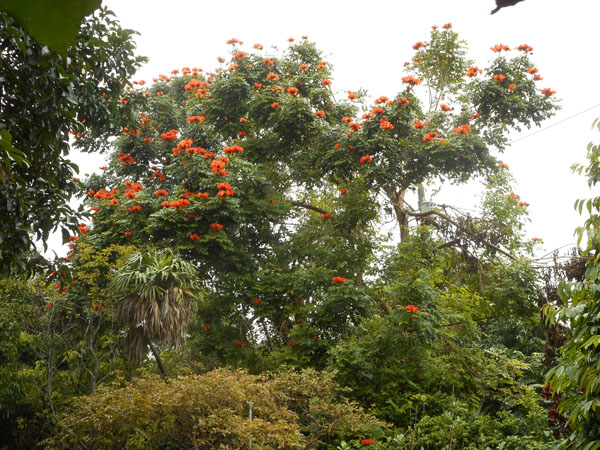 |
| and the water lilies were just getting going |
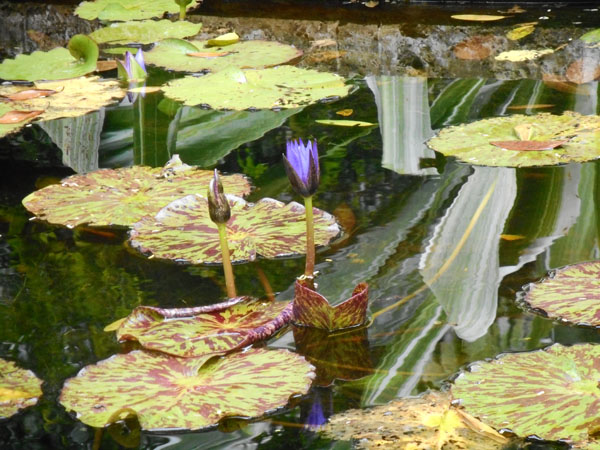 |
| The waves give indication of how windy it was |
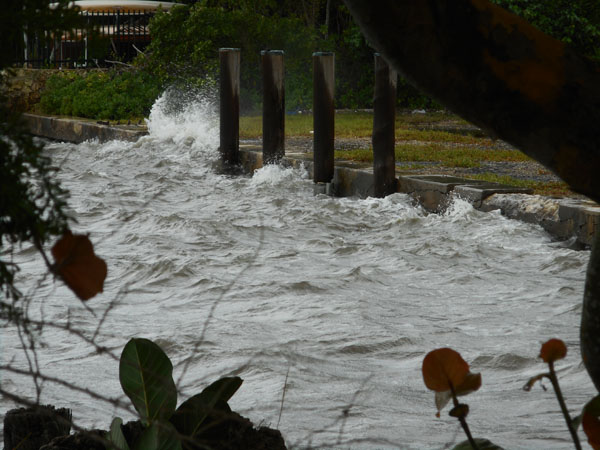 |
| even the herons (probably a litttle blue heron) were hunked down |
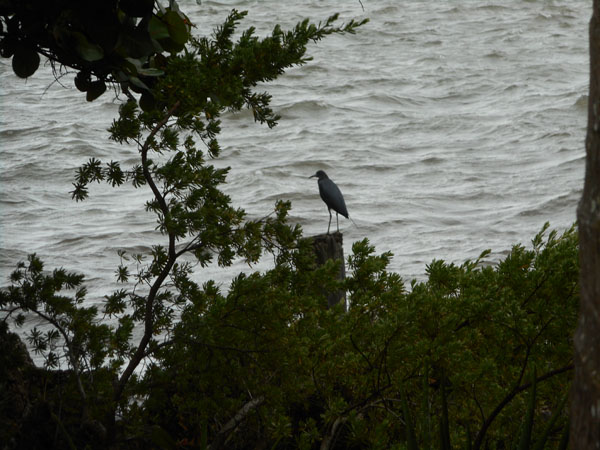 |
| Dick blew out to the point for a last look at the Atlantic for a while. |
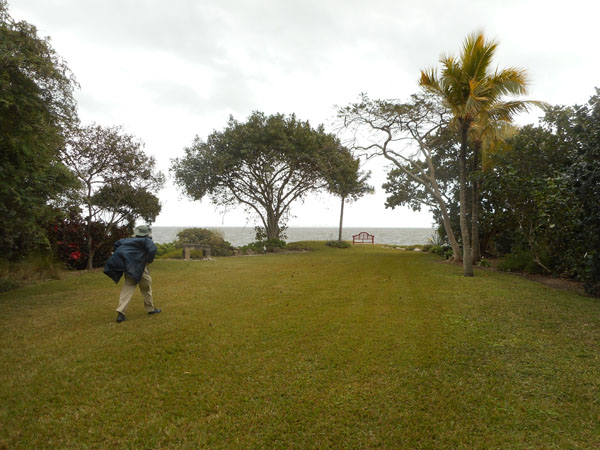 |





























































































